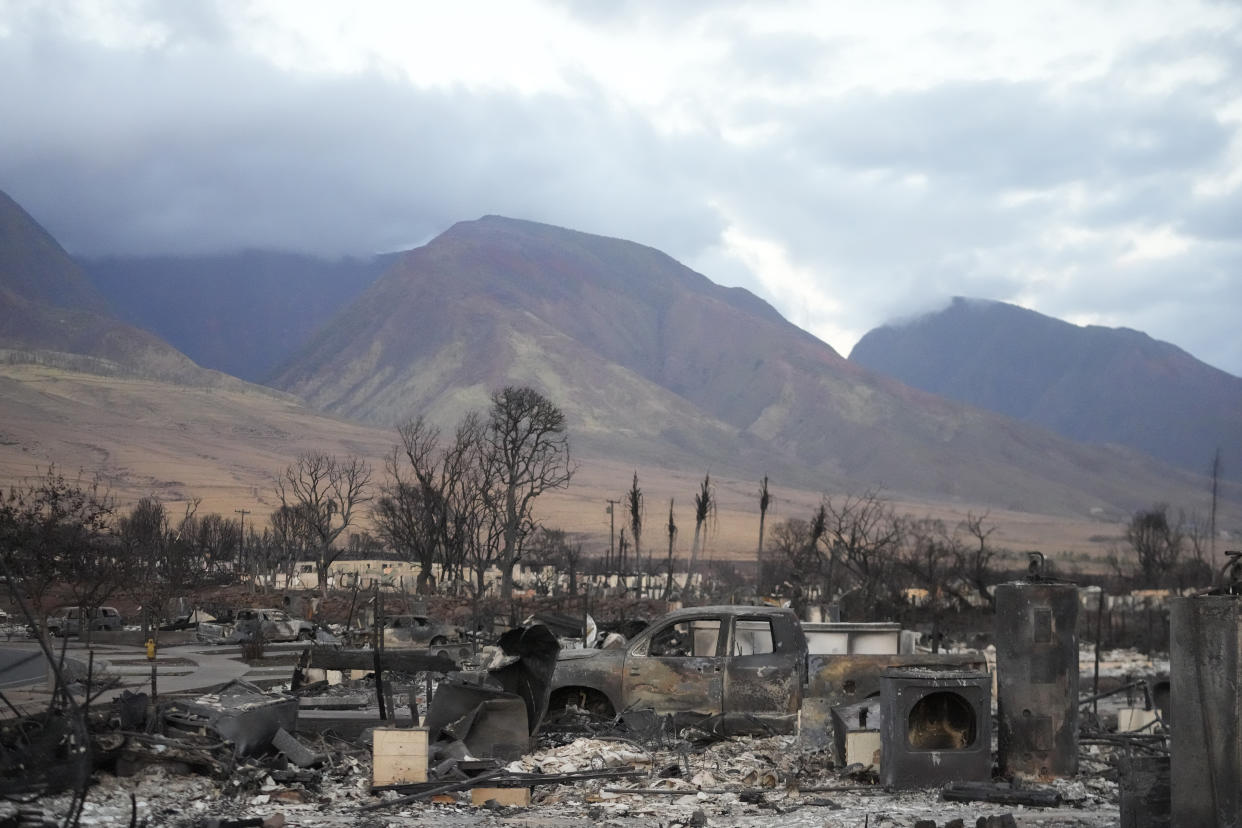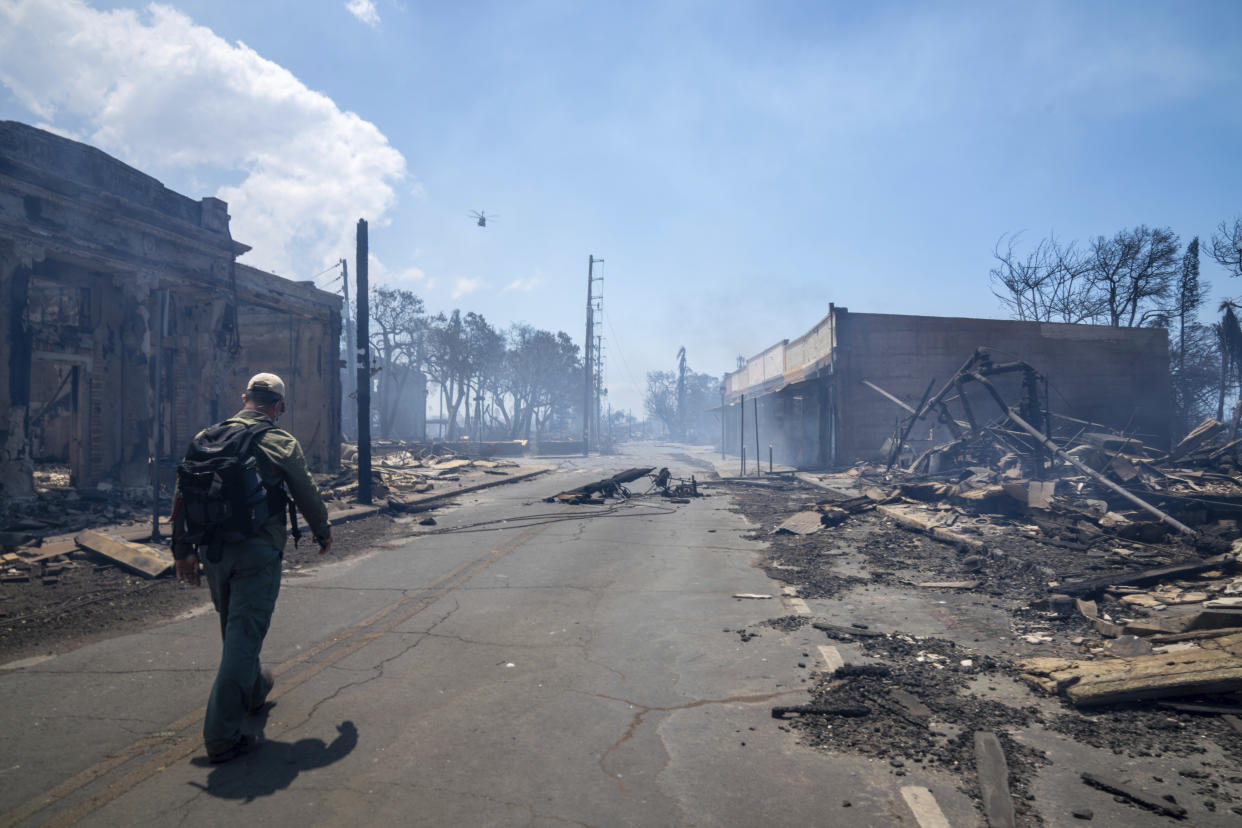3 questions for disaster experts on how to be prepared for wildfires
President Biden and first lady Jill Biden will travel to Hawaii on Monday to survey the devastating damage caused by rapidly spreading wildfires that swept through the island of Maui last week. The historic town of Lahaina was destroyed, leaving thousands of residents displaced. More than 100 people have been confirmed dead, but officials say the final death toll from the wildfires is expected to rise as search efforts are ongoing.
“The conditions in Hawaii that [made] this such a tragic disaster, unfortunately, also exist in a lot of places around the country,” Michele Steinberg, wildfire division director at the National Fire Protection Association, told Yahoo News. “This includes the drought conditions, the dry vegetation, and homes that maybe have not been designed to resist fire.”
The fast-moving blazes are a sobering reminder that as the threat and effects of climate change continue to grow, wildfire preparedness could become routine practice not just in areas where it has become a way of life, like in California and Texas.
Yahoo News spoke with Steinberg and Tracy Fox, national spokesperson for the American Red Cross, about the things people can do to protect themselves.
Some responses have been lightly edited for length and clarity.

1. What are some of the main things people can do to prepare for a wildfire?
Steinberg: Prepare your home so that it can resist ignition from wildfires. You don’t want anything touching the house that is flammable, like mulch, shrubs and bushes, within 5 feet, and piles of firewood close to the home. Make sure rooflines and gutters are clear of any debris like leaves and pine needles. They seem very small and insignificant, but those can carry fire to the structure of your home.
Fox: Whether it’s a wildfire, tornadoes or any other type of natural disaster, the first thing we encourage everybody to do, if you’ve got a smartphone, is to download the free Red Cross Emergency app. That not only helps with alerts and keeps you informed when weather, including wildfires, might be approaching your area, but after a disaster, it provides you with all of the shelter locations so you can have a safe place to go.
Make sure you’re listening to what local emergency managers or local officials are advising, and pay attention to any potential threats with incoming weather through local media.
Gather up some go bags of things you need if you do have to evacuate, like clothing, medication, and things for younger and older family members and pets.
Know your area well, whether at home or on vacation, and plan for alternate routes to get to more populated areas. Typically shelters are going to be in schools or community centers, places that are the hub of the community.

2. If wildfire is an imminent threat, what are some main things someone should do?
Steinberg: We try to inform and encourage people to be alert of the warnings. If you are asked to leave by law enforcement or fire services, be ready to go with a short notice. If you’re in an area and nobody is telling you to evacuate, but all your senses are saying, “I can see smoke, I can see fire, it’s dangerous,” you should go. Do your best to understand where you are, where the fire’s coming from, and get yourself to safety.
Fox: If you happen to be out, say you’re hiking, for instance, and a brush fire sparks up, look for bodies of water — if there’s a stream or lake nearby that you can get into and keep yourself safe while the fire burns through.
3. Do you have any communication tips if cellphone towers are down?
Fox: Unfortunately until the cell towers go back up, there’s not a whole lot that can be done. Any of the local shelters, whether it’s a Red Cross shelter or operated by another partner, those can be great sources of information. A lot of folks go there if they’re missing someone and trying to relocate with friends and family members.
Steinberg: Have an analog backup of contact information so that you can contact people when you have the opportunity (for example, with a satellite phone that an emergency response organization might have).
Here’s more information on how to help Hawaii’s wildfire victims.
(Cover illustration: Alex Cochran for Yahoo News; photos: Raymond Gehman/Corbis via Getty Images, Mark Ralston/AFP via Getty Images, Patrick T. Fallon/AFP via Getty Images)


